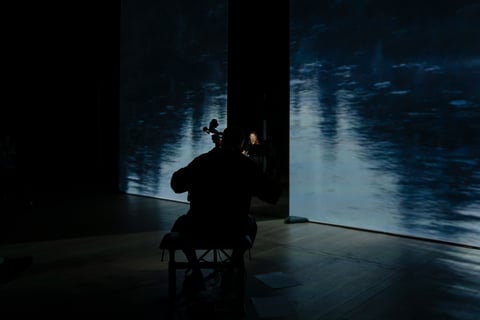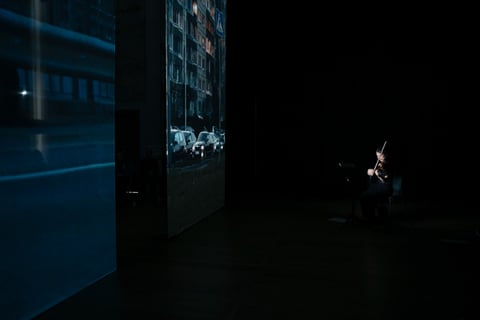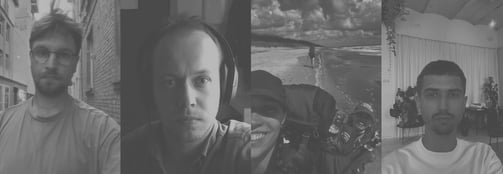Going to nowhere
interdisciplinary practice
Our daily relationship with the city’s soundscape is accompanied by a constant shifting of attentiveness – much is heard, but not all is listened to. Attentive listening is what allows us to feel our acoustic environment better and discover what has always been just beside us. Applying the same to visual or olfactory experiences opens up the possibility of observing, as if through a microscope, a completely different layer of the city.
We came together to explore and experience the environment we inhabit in a way we have not experienced before – by focusing on detailed explorations of auditory and visual sensations. Starting from the geographical centre of Vilnius, we walked in different directions of the city, listening to and observing the environment we were in, as well as how and when it changes. In this attentive visual and auditory observation of the different urban layers, we compared them, observed their movement and the counterpoint of their constituent elements.
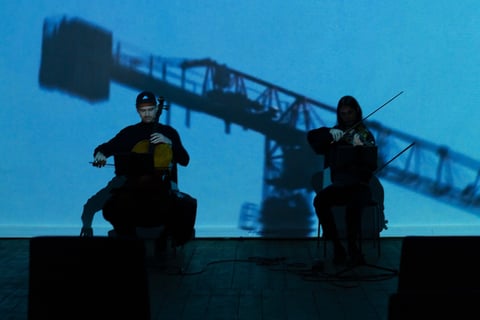



The practice 'Going to Nowhere' is an experiential research of the Vilnius city with accompanying works of different genres reflecting on the practices being made. The practice consists of sound walks, mapping, route making, field recording, video, photo recording, textual reflections.
The first phase of the research covered the west and east sides of the city, starting from the geographical centre of Vilnius - the White Bridge. The distance equates to approximately 5km or one hour of walking. To the west the team members walked to the Pilkakalnis outcrop (54°41'05.1 "N 25°13'27.4 "E), to the east to the Sun Cemetery (54°41'40.3 "N 25°18'46.2 "E).
The analysis of the walk data shows a wide variety of route choices by the participants and a fairly high frequency of acoustically or visually prominent objects being passed. In other words, although the choice of paths varies, certain objects appear on the route anyway. Following this idea, two parts of the musical score were created. The score functions like a map of the city, a set of motifs to be performed freely by one’s own choice; like flaneuring, they can lead to a different place each time. The two parts, performed on violin and cello, work independently, but create a soundscape interwoven with different textures – always similar, but constantly changing.
Following the same directions, video footage was captured, which became a visual relief of the music during the live performance.
The two parts of musical piece were recorded and released as an EP:
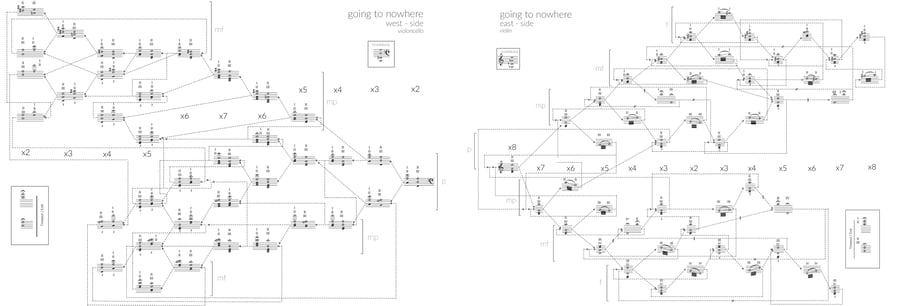

The other two routes led to the northern and southern parts of Vilnius. Following the logic of the previous walks, these paths also served as inspiration for audiovisual compositions. In all four cases, the walks were directed toward either a green urban area or a cultural/architectural site. In the north, it could be any location within the Šeškinė Slopes Geomorphological Reserve (54°42'20.5"N 25°15'46.4"E); in the south, the route culminated at St. Stephen the Deacon Church (54°40'09.4"N 25°16'34.4"E).
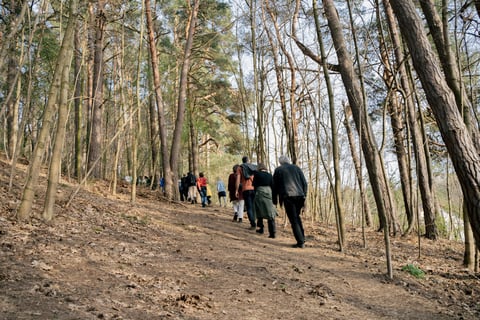

Spherescapes
Although each walk lasted approximately one hour from the city center, each direction revealed a unique visual and sonic character. A key differentiator between the northern and southern routes was the presence of the river, which became a prominent acoustic element. When heading east or west, all participants spent part of the route walking along the Neris River. Regardless of direction, these surroundings are typically greener and more forested, with clearly audible birdsong and sounds typical of urban parks. Although the river itself produces little noise as it flows slowly, its banks—situated below traffic and residential areas—create a distinct acoustic relationship with the city, as if one were both within and observing it from a slight distance.
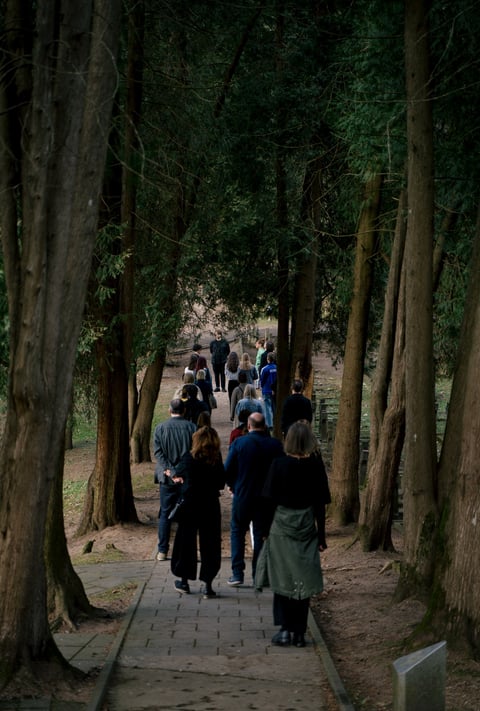

All four parts of the audiovisual project were presented as a single cohesive work titled “Spherescapes.” The title refers to the equidistant urban peripheries explored from a central point, summarizing a major stage of artistic research. It is a four-part work combining music, moving image, and soundscape.
The piece began with a soundwalk aimed at introducing the audience to the principles of the artistic research and gently immersing them in the mood, tempo, and mode of listening/viewing the work. The route encompassed two contrasting poles of the Antakalnis district: wooded paths muffling city noise, a cemetery zone, sounds from heavy traffic and a school sports field, as well as the residential courtyards connecting them. Overhead, planes constantly took off and landed, forming a sonic layer of their own.
The walk ended in the Sapiegos Palace, where shortly afterward Hildegard Westerkamp’s instructions on listening to the environment were played:
Start by listening to the sounds of your body while moving.
They are closest to you an establish the first dialog between you and then environment.
Try to move without making any sound.Is it possible?
Which is the quietest sound of your body?
Lead your ears away from your own sounds and listen to the sounds nearby.
What do you hear?
How many continoussoundssontinous?
Can you detect interesting rhythms, regular beat, the highest and the lowest pitch?
Do you hear any intermittent or discrete sounds, rustles, bangs, swishes, thuds?
What are the sources of the different sounds?
What else do you hear?
Lead your ears away from these sounds and listen beyond - into the distance.
What is the quietest sound?
What else do you hear?
What else?
A violin and cello duo performed the sound material seated on opposite sides of the hall, facing two screens. Their positioning suggested differing perspectives of the same listening/viewing experience. Though playing identical map-like scores, they followed divergent paths through the musical landscape.
